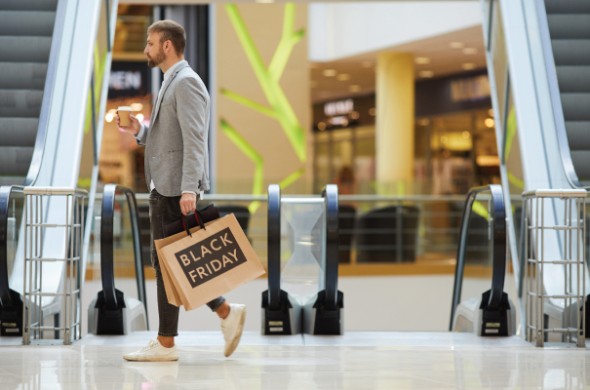The fashion industry has seen some dramatic changes over the past few years. Augmented reality, shopping in the metaverse, and the explosion of independent labels have disrupted fashion houses around the world that are scrambling to cater to the tastes of Gen Z while maintaining a hold on the older generations.
Here are some statistics, trends, and strategies for fashion e-commerce companies to use in 2022 to take their sales and marketing efforts to new levels of success.
Statistics about e-commerce Fashion
Despite recent setbacks, the fashion industry is looking to explode in the next three years, and technology, influencers, and brick-and-mortar (yes, physical locations) will lead the way.
Industry-wide data
In 2021, e-commerce fashion was an industry worth around $759.5 billion. That number is expected to top $1 trillion in 2025. That’s a compounded growth rate of 7.2 percent per year.
Established fashion houses and independent disruptors can tap into this market potential by giving their target audience what they want: customization and personalization. Repeat business through loyal customers will also take precedence.
E-commerce fashion is expected to take up around 60% of the entire fashion industry by 2024, up from around 47 percent in 2021.
The COVID Impact
COVID-19 didn’t shut down the fashion industry. It made stakeholders re-imagine what it would take to keep revenue. E-commerce was one way. Creating fashionable loungewear was another. People who had to work from home didn’t have to dress up for the office anymore. Loungewear sales skyrocketed. But then fashion houses faced a dilemma with what to do with their stocks of fashionable clothes that no one bought.
Clothing & apparel
Clothing and apparel are still the largest segments of the e-commerce fashion market. Apparel in e-commerce will increase by around 12.7% of the overall fashion market from 2021 to 2024, accounting for a penetration rate of 45% of the overall market. However, companies can watch out for the shoe segment with growth right behind that one.
In Europe, it is expected that consumers will spend on average around $990 on fashion-related purchases in 2025.
Shoes
Shoes will grow an astounding 11.6 percent, right behind apparel, in the next three years. Fashion brands would do well to pay attention to having shoes that complement the apparel portion of their business. Shoes will account for around 35 percent of the overall market.
Accessories & bags
Accessories and bags should grow around 8.5 percent for e-commerce, with an overall penetration rate of around 25% into the fashion industry.
Jewelry & luxury
Jewelry and luxury fashion took hits during the pandemic, but they will rise in the coming years. This segment was valued at around $228 billion in 2020 and is expected to increase to $307 billion by 2025. Luxury watches are expected to take up around $9.3 billion of that revenue in 2025.
Trends & strategies for E-Commerce Fashion in 2022
Now that we’ve gone over some key statistics, let’s take a look at trends to pay attention to in 2022.
Balance personalization & customization with privacy
Brands need to customize and personalize the experiences for customers. One way to do that is through technology that builds on people’s shopping preferences. Make offers and suggestions based on someone’s past purchases.
Beyond that, offer technological choices, such as augmented reality, that show someone what they would look like in an outfit. The technology takes someone’s photo and overlays someone’s selections onto that photo to give them a realistic view of what the pieces look like while they’re wearing them. It’s like a virtual room for trying on clothes.
However, your personalization can’t go too far. Your lines don’t have the time to make customizable designs, nor do you want to invade someone’s privacy with the information you collect.
Get in the Metaverse
The metaverse is where fictional, digital worlds exist in a virtual reality space. Under Armour is a key player in the metaverse, where it sells non-fungible tokens (NFTs) through cryptocurrency. NFTs are unique segments of code found nowhere else. They can be completely customized to someone’s likes and tastes. And they only exist in the virtual world.
Brand-building over paid ads
Younger buyers in Gen Z want to buy into a brand, not their advertising. Lonely Ghost is the perfect example of how this works.
Indy Blue Severe was a YouTuber paid by major brands to eat at restaurants and stay at hotels so long as she posted about her experience. Then she gave it all up to start her fashion brand, Lonely Ghost, at age 24. Her followers took to her new outfit, and the rest is history. Now, Severe has a thriving fashion brand focusing on streetwear that her target audience loves.
Fashion houses should definitely look towards brand-building versus paid advertising when it comes to influencing younger buyers with disposable income.
Sustainability
Buyers are much savvier about carbon footprints and global warming than they were 10 years ago, and fast-fashion has received a lot of criticism for its manufacturing methods that add chemicals to the environment.
As many as 42% of consumers around the world purchase eco-friendly items. Fashion houses need to cater to this large segment of their audience by showing what sustainable practices they undertake.
Social media & e-Commerce
Social media will not go away and not any time soon. Facebook still has the most active users per day and per month. Typical social media users spend almost around 15% of their time awake on social media.
Competing for these users should be a priority. This is where brand-building comes into play, but also touting in-app shopping. Social media can take you from its own app straight into an e-commerce app to create “social commerce.”
Look for social commerce to triple by 2025, with Facebook leading the way. Over one-third of Facebook users will purchase things directly through the platform in 2022.
Back to brick-and-mortar
It will happen with digital hubs and augmented reality. But also due to the practicality of the fashion industry. More than 50 percent of consumers want to see a physical item in a store to try it on, while 22 percent of online returns happen in a store due to customers not liking the look of an item.
Augmented reality in a store will help a customer decide if a piece looks good on them. Meanwhile, consider how a retail store can act as a fulfillment center. Someone can order the item in the store, have it shipped there for free, and then try it on once it arrives. If the customer doesn’t like it, they can return it. You can gather personalized and customized information to give that person a deal for similar items later on to create brand loyalty and returning customers.
Technology Consulting Services | Retail Consulting Services
Ollen Group is one of the leading retail consulting firms in the Middle East & Africa region (MEA) offering consumer goods, retail consulting services and ecommerce services with turnkey solutions from strategy to execution. Our strategy consultancy services and strategic innovation management team are up to date with consumer shifts, and the necessary steps needed to find success in the future. Our expert consultants will help your through your journey.
Read our latest insights, ideas, and perspectives that explore the trends shaping the future of business and society. Our consultancy services go hand-in-hand with these insights, confirming our position as industry leaders. Get in touch to find out more about our consulting services and industry expertise.



